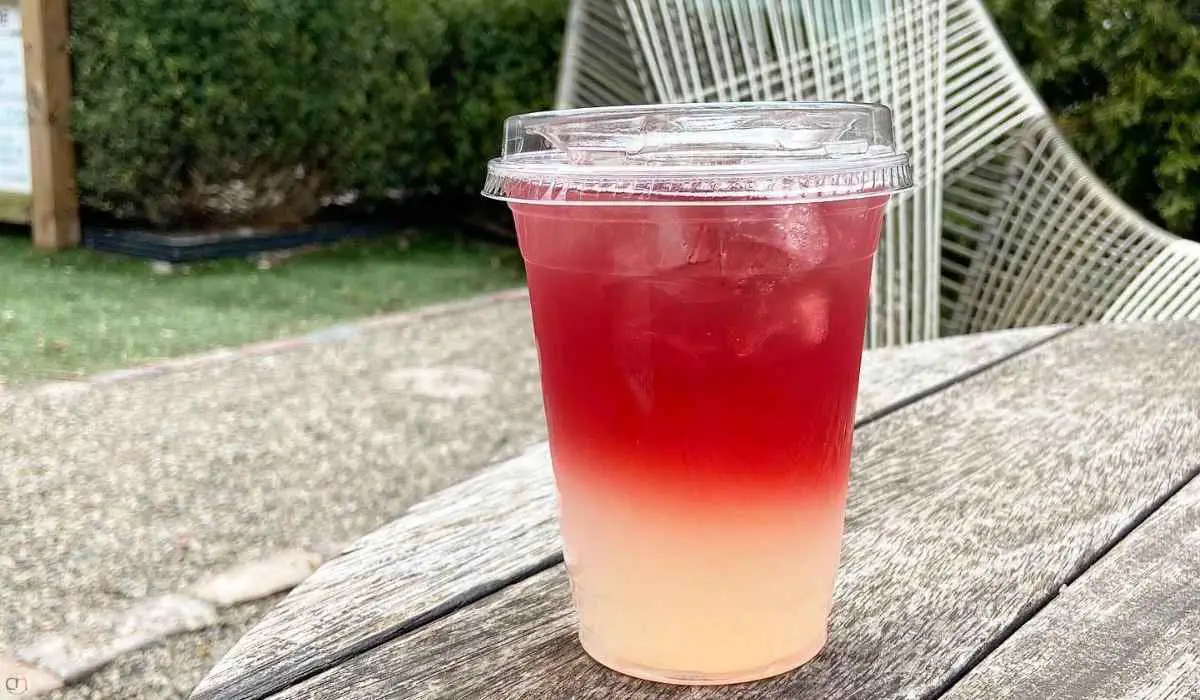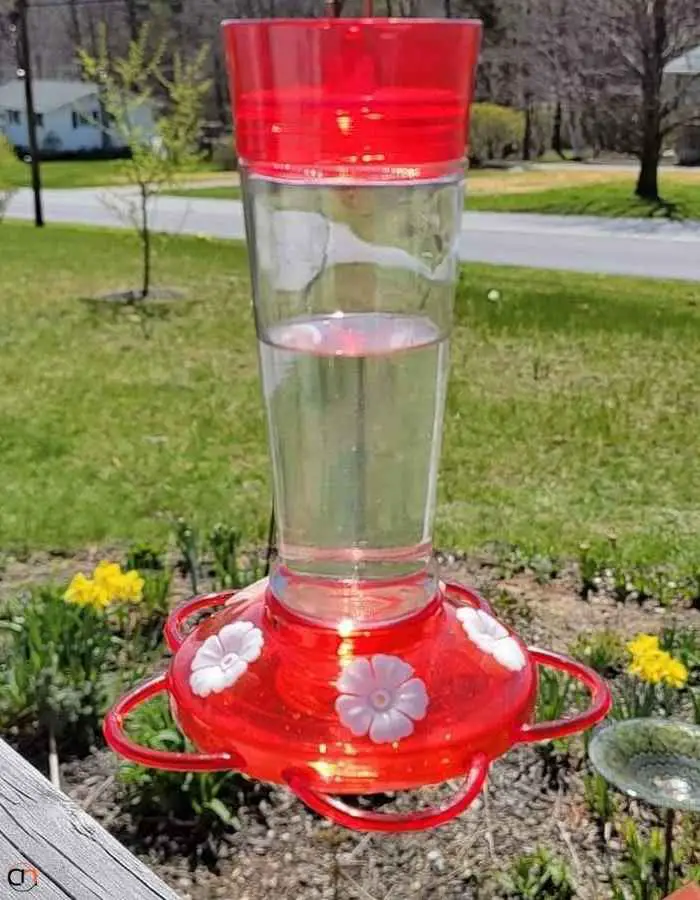If you love watching hummingbirds flutter in your garden, why not attract even more of these tiny wonders with a homemade hummingbird food recipe?
Making your own nectar is simple, natural, and a great way to provide these beautiful birds with the energy they need to keep buzzing all day long.
Enjoy hummingbird food recipe and tips to help you create the perfect hummingbird food that will have them visiting your feeders nonstop!
Best Hummingbird Food Recipe Ideas:
Here are 2 simple and safe hummingbird food recipes that mimic natural nectar and keep your tiny visitors happy and healthy:
1. Classic Homemade Hummingbird Nectar
Ingredients:
-
1 cup white granulated sugar
-
4 cups water
Instructions:
-
Combine sugar and water in a saucepan.
-
Heat gently and stir until the sugar is fully dissolved.
-
Let the mixture cool completely before pouring it into a clean feeder.
Tip: This is the most recommended and safest formula for hummingbirds. No need for red dye!
2. No-Boil Quick Nectar
Ingredients:
-
1 cup white granulated sugar
-
4 cups warm water (not hot)
Instructions:
-
Stir sugar into warm water until fully dissolved.
-
Let it cool slightly, then fill your feeder.
Tip: Perfect for quick refills. Just ensure the sugar is completely dissolved before use.
Reminder: Store extra nectar in the fridge for up to one week and clean your feeder regularly to prevent mold or bacteria. Never use honey, brown sugar, or artificial sweeteners.
Tips for Making the Perfect Nectar:
-
Use the Right Sugar-to-Water Ratio: Stick to a simple 1 part white granulated sugar to 4 parts water ratio to mimic natural flower nectar and provide the ideal energy source for hummingbirds.
-
Avoid Using Honey or Artificial Sweeteners: Honey can promote harmful mold growth, and artificial sweeteners provide no nutritional value and can be toxic to birds.
-
Boil the Water: Boiling helps dissolve the sugar completely and sterilizes the mixture, keeping it fresh longer. Allow the nectar to cool before filling the feeder.
-
Skip Food Coloring: Red dye isn’t necessary; hummingbirds are attracted to the red color of the feeder itself, and artificial dyes can be harmful.
-
Replace Nectar Frequently: Change the nectar every 3-5 days, or sooner in hot weather, to prevent fermentation and mold growth.
-
Clean Feeders Regularly: Clean your feeders thoroughly with hot water and a brush every time you refill to keep the nectar safe and fresh.
Variations and Enhancements:
-
Fruit-Infused Nectar: Add mashed fruits like strawberries, blueberries, or raspberries to your basic sugar water for a natural flavor boost. Just be sure to strain the mixture before filling your feeder to avoid clogging.
-
Herbal Additions: Steep herbs such as mint or chamomile in the hot nectar for a few minutes, then strain and cool. This can add a mild, pleasant aroma that may attract hummingbirds.
-
Citrus Zest or Juice: A small splash of lemon or orange juice can add a subtle zing to the nectar, mimicking some natural floral notes.
-
Brown Sugar Alternative: Occasionally substitute white sugar with brown sugar to add trace minerals, but avoid using it regularly as it can ferment faster.
-
Avoid Artificial Ingredients: Skip any artificial sweeteners, honey, or food coloring to keep the nectar safe and healthy for hummingbirds.
These simple twists can make your homemade nectar even more appealing while staying safe and nutritious for your feathered friends.
Best Practices for Attracting Hummingbirds:
-
Place Feeders in Shaded Areas: Position your feeders in spots that receive partial shade to keep the nectar fresh longer and provide a comfortable resting place for hummingbirds.
-
Use Bright Red Feeders: Hummingbirds are naturally attracted to the color red, so choosing feeders with red accents can help catch their attention without the need for dyed nectar.
-
Plant Native Flowers: Surround feeders with nectar-rich, native flowering plants like trumpet vine, bee balm, and salvia to provide natural food sources and shelter.
-
Keep Feeders Clean: Regularly wash feeders with hot water to prevent mold and bacteria, which can be harmful to hummingbirds.
-
Offer Multiple Feeders: If space allows, set up several feeders to reduce competition and attract more birds.
-
Avoid Pesticides: Minimize or eliminate pesticide use around your garden to ensure a safe environment for hummingbirds and their insect prey.
Following these tips will help you create a hummingbird-friendly habitat that keeps these tiny visitors coming back season after season.
Safety Tips for Feeding Hummingbirds:
-
Use Only White Granulated Sugar: Avoid honey, artificial sweeteners, or raw sugars, as these can be harmful or toxic to hummingbirds.
-
Skip Red Food Coloring: Red dye is unnecessary and may be harmful; hummingbirds are naturally attracted to the red parts of feeders.
-
Keep Feeders Clean: Wash feeders thoroughly every few days with hot water to prevent mold and bacteria growth, which can make hummingbirds sick.
-
Replace Nectar Regularly: Change the nectar every 3-5 days, and more often in hot weather, to avoid fermentation and spoilage.
-
Place Feeders Safely: Hang feeders away from predators and high-traffic areas to protect the birds while they feed.
-
Avoid Pesticides Near Feeders: Keep harmful chemicals away from feeding areas to ensure a safe environment for hummingbirds.
Key Take Away:
- Making your own hummingbird food is simple, safe, and rewarding. By using the right sugar-to-water ratio,
- keeping feeders clean, and following best practices, you can attract vibrant hummingbirds to your garden and enjoy their beauty all season long.
CTA:
Ready to welcome hummingbirds to your outdoor space? Try these easy homemade nectar recipes and share your hummingbird feeding experience with us in the comments below! & join us.
Read Next; 30 Summer BBQ Food
FAQs:
Q. Can I use honey instead of sugar for hummingbird nectar?
No, honey can promote harmful mold and bacteria growth, which is unsafe for hummingbirds.
Q. How often should I change the nectar?
Replace nectar every 3-5 days, and more frequently in hot weather to prevent fermentation.
Q. Do I need to add red food coloring to the nectar?
No, hummingbirds are attracted to the red color of the feeder itself, so food coloring isn’t necessary.
Q. Can I add fruit or herbs to the nectar?
Yes, small amounts of mashed fruit or herbs like mint can be added, but always strain the nectar before filling feeders.
Q. How do I clean hummingbird feeders?
Use hot water and a brush to scrub feeders thoroughly every time you refill to prevent mold and bacteria buildup.



